Wayward Strand Review (PS5) – Care In The Air
It’s Summer in 1978. Wayward Strand begins as the lead character, a girl named Casey Beaumaris, travels by car with her mother. They’re heading along the winding country roads of Victoria, Australia towards a peculiar destination. They’re headed to the Gräfin Isabella, a hospital care home aboard an airship where Casey’s mum works as a senior nurse. The airship is short staffed and Casey is being asked to go and help out for a few days.
I estimate that the opening five to ten minuet section of Wayward Strand, up to where you arrive on the airship, is the only part of this game that every player will experience in the same way. It’s one of only a handful of parts in the game that are constants for every player, on every play though.
It’s All Up In The Air
After this point, Wayward Strand stops guiding you. You’re given a few vague instructions – help out with the patients where you can, don’t bother the nurses, be good – but there’s no overriding objectives.
Casey also has her own motivations for boarding the airship which, at least at first, guide your actions; Casey is an aspiring journalist on her school paper and she wants to write about the hospital on the airship. Where did the airship come from? How did it get to Australia? What was it before it was a hospital? These are all lines of questioning that Casey wants to follow and ice breakers with each character she meets.
Across three days, you’re allowed to explore the airship at your leisure. The ship itself is across three floors which are connected via stairs and a lift. You move through the relatively small but condensed ship innards along a linear track on each floor, only going deeper to enter into rooms.
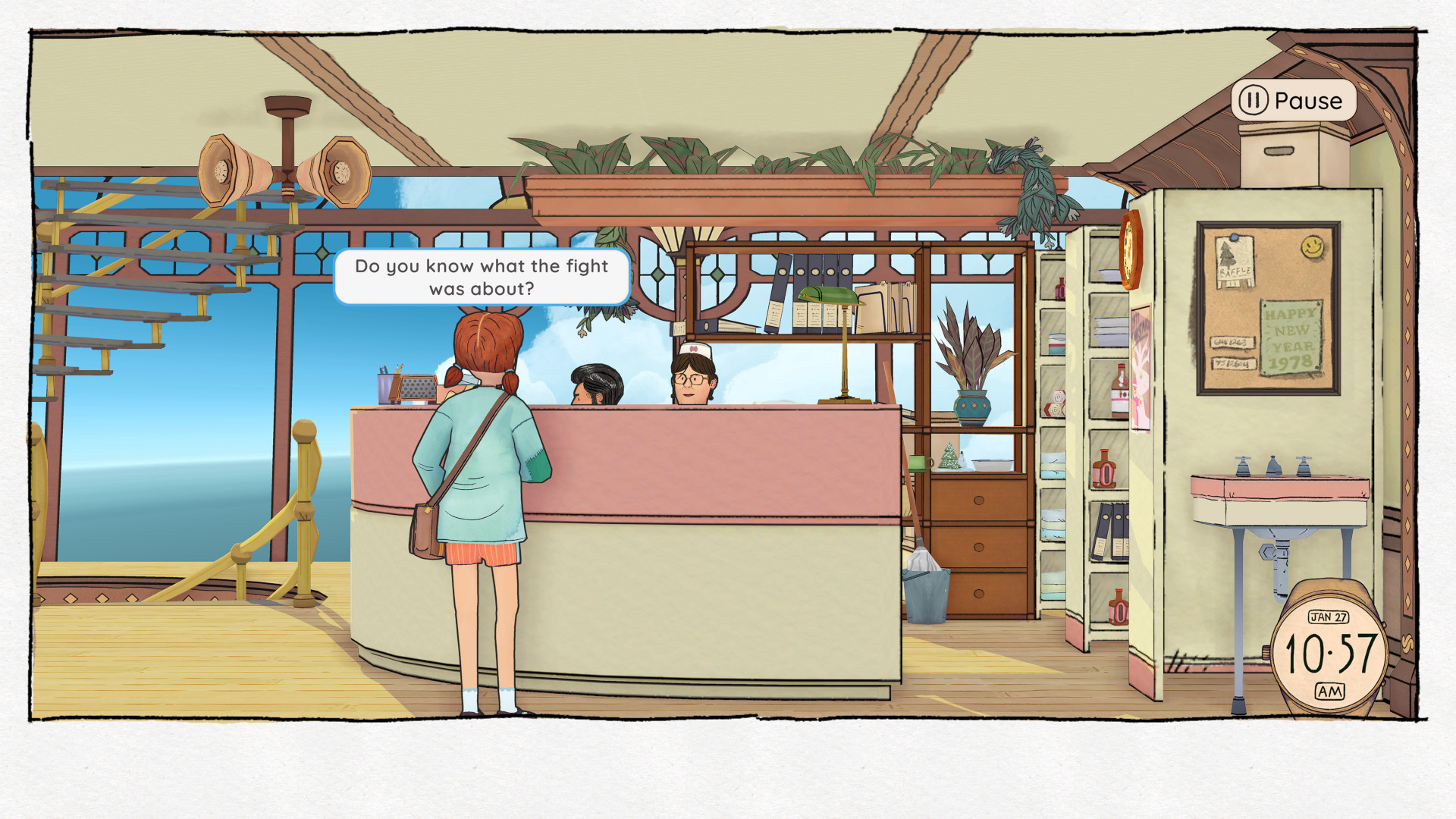
Time Flies
The unique aspect of Wayward Strand that makes it stand out from its peers is that each day on this airship continues regardless of Casey’s involvement. The world moves forward as time progresses. Nurses will go about their rounds. Patients will gather to eat dinner or make social calls on one another. At any one time, there’s usually two or three things happening around the airship. This means that it’s impossible to see every facet of the stories unfolding in a single playthrough.
It’s refreshing to play a game like this. Almost every game you will ever play puts the player at the centre of its universe. You always play as the saviour, the hero/anti-hero, the lynchpin to the whole game. You, as the player, are imperative to what the game does. That’s not the case with Wayward Strand. If you put down the controller and walk away, the story, the characters and the world will still progress unabated.
Much like the proverbial tree that falls in the woods, the narrative in Wayward Strand is pulled together via what is witnessed. As Casey, you can visit patients, sit with them and question them about the air ship and their lives. On occasion, you might even get to help the patients in small ways. Less directly, Casey can hang around close by the characters and eavesdrop on their conversations. Everything that is observed about each patient and staff member is tracked within a note pad that can be re-read at any time.
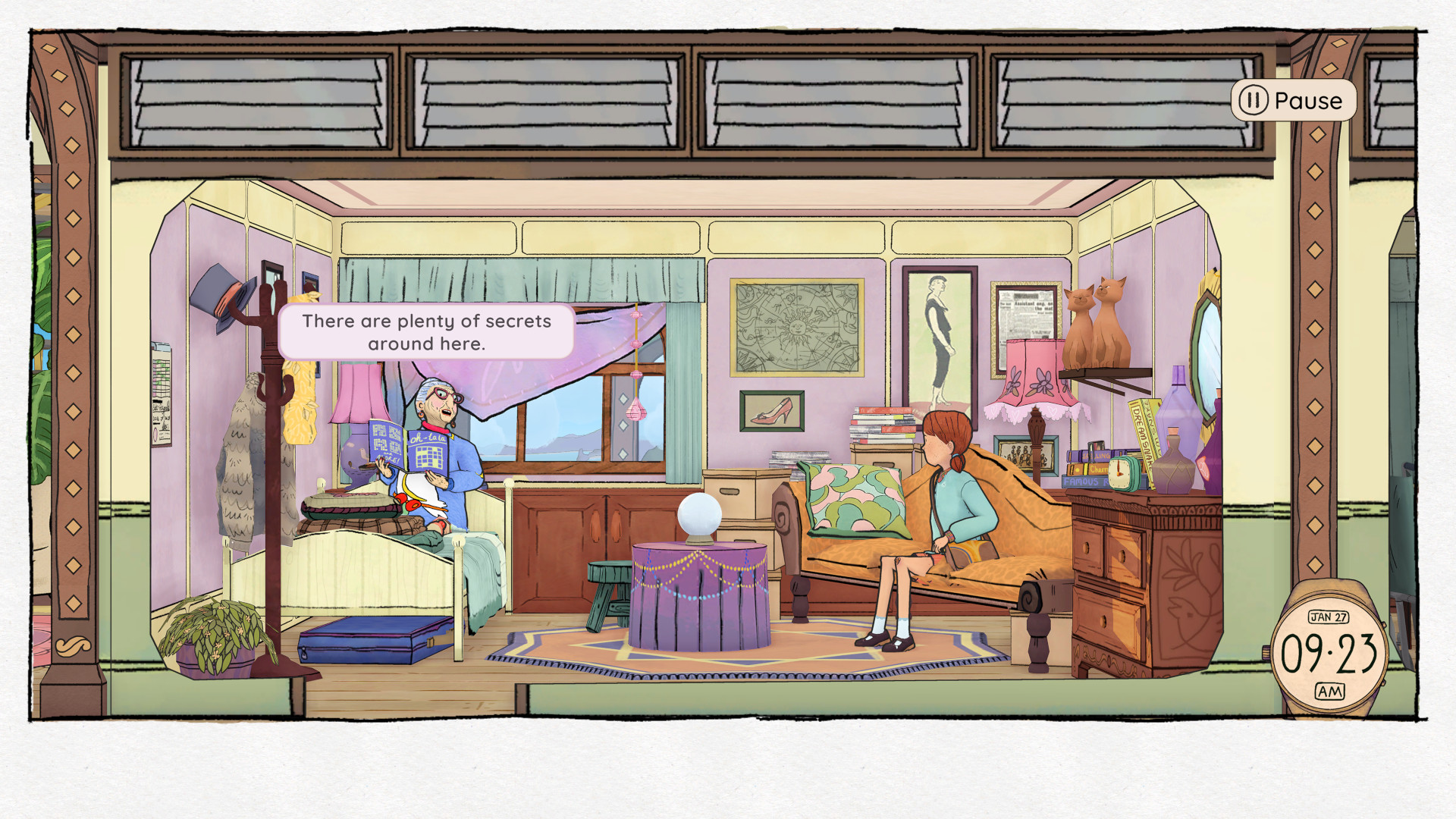
The very nature of the way the stories work in Wayward Strand means that sometimes you’ll have to read between the lines. It’s likely an impossibility to see every aspect of a storyline during one playthrough, even if you stay with a single character throughout. You’ll hear parts of conversations, coming in at the end of discussions and you’ll have to infer what has happened based on what information you can get out of others. This creates an engaging edge to the game, even when the storyline is something mundane like a few characters gossiping about others.
A Tale As Old As…Well… The Patients
While there’s one core storyline that you’ll see every time you play that revolves around the relationship between Casey and her mum, there’s a web of underlying stories in Wayward Strand. I won’t spoil them here as doing so would ruin their most emotive moments. What I will say is that even though Casey isn’t the central character, and despite the almost voyeuristic way that the stories are digested, it does nothing to dampen its impact.
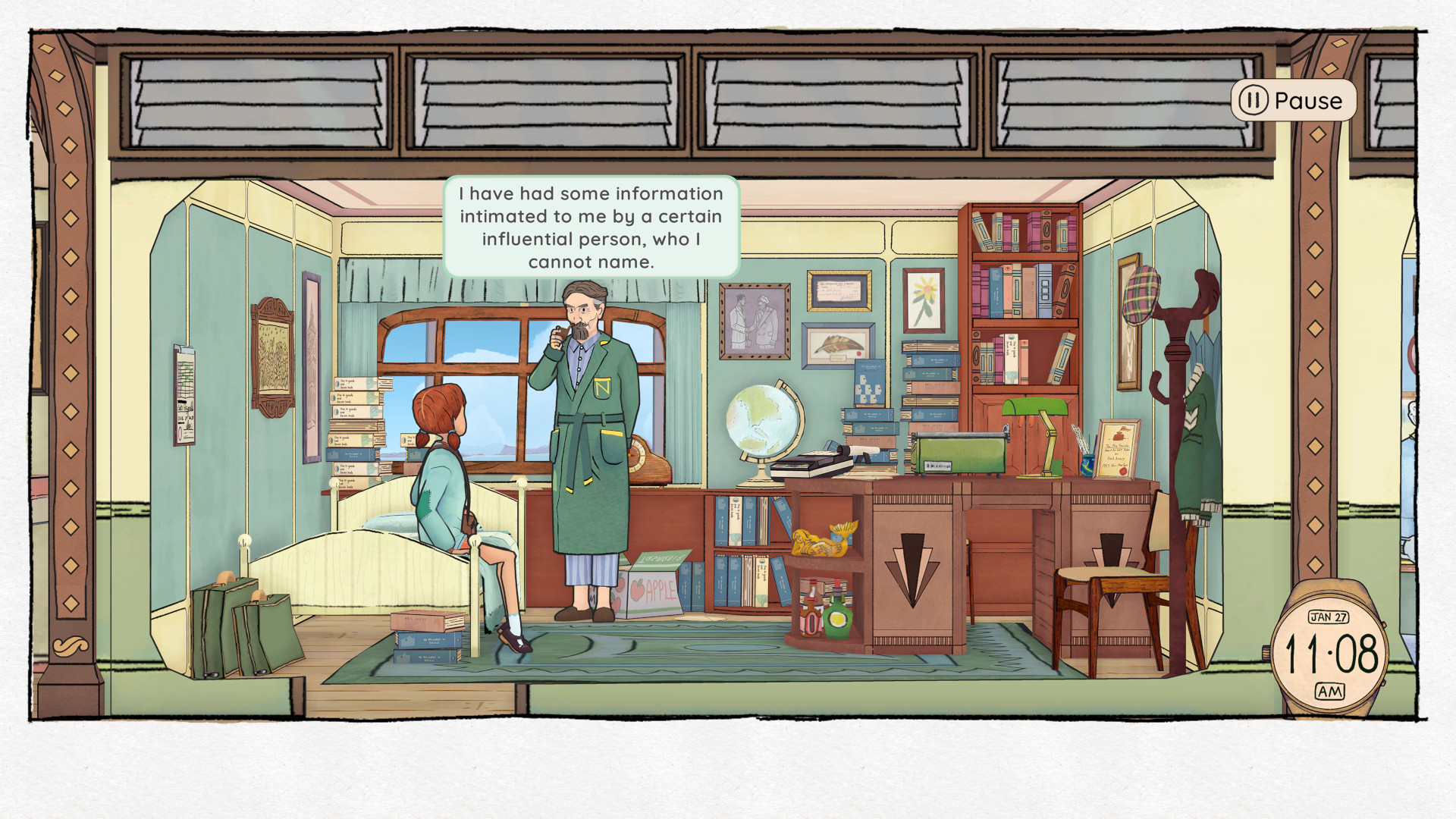
That’s primarily because the cast of characters in this game are incredibly well crafted. The patients aboard the airship are charismatic individuals that feel familiar without being a trope.
Tomi is a mute who loves horticulture and has a room full of plants. Ester Fitzgerald is the quirky busybody who loves to gossip when she’s not reading palms or complaining about the nursing staff. Dr Margot Bouchard is the sickest patient on the airship who has a prickly demeanour hiding a deep and contemplative person beneath. Neil Avery is a famous writer and isn’t averse to telling everyone about his achievements. Heinrich Pruess is an enigmatic Austrian who’s trust is earned as slowly as he speaks. Then there’s Ida Vaughan, everyone’s grandma and all around lovely lady whom I imagine has a bunch of tissues pushed up her sleeve.
Alongside the patients are a few colourful staff members too. Every patient has positive things to say about Ruth Beaumaris, but to her daughter Casey, she’s overbearing and difficult to please. Felix Pettigrew is the manager of the airship and would likely have felt at home as a character in The Office. Devon is the ship’s cook and is little more than a voice on an intercom – but that voice carries quite a lot of character. Dr Chen is the lead physician aboard the airship, competent and constantly busy. Lilly is the newest nurse on board who’s being supported by Joe, the most experienced Nurse aboard who’s curt with patient and co-workers alike. Finally, there’s Ted Muir, the lift operator and a nice, grounded chap – the irony being that he’s up in the air for most of the day.
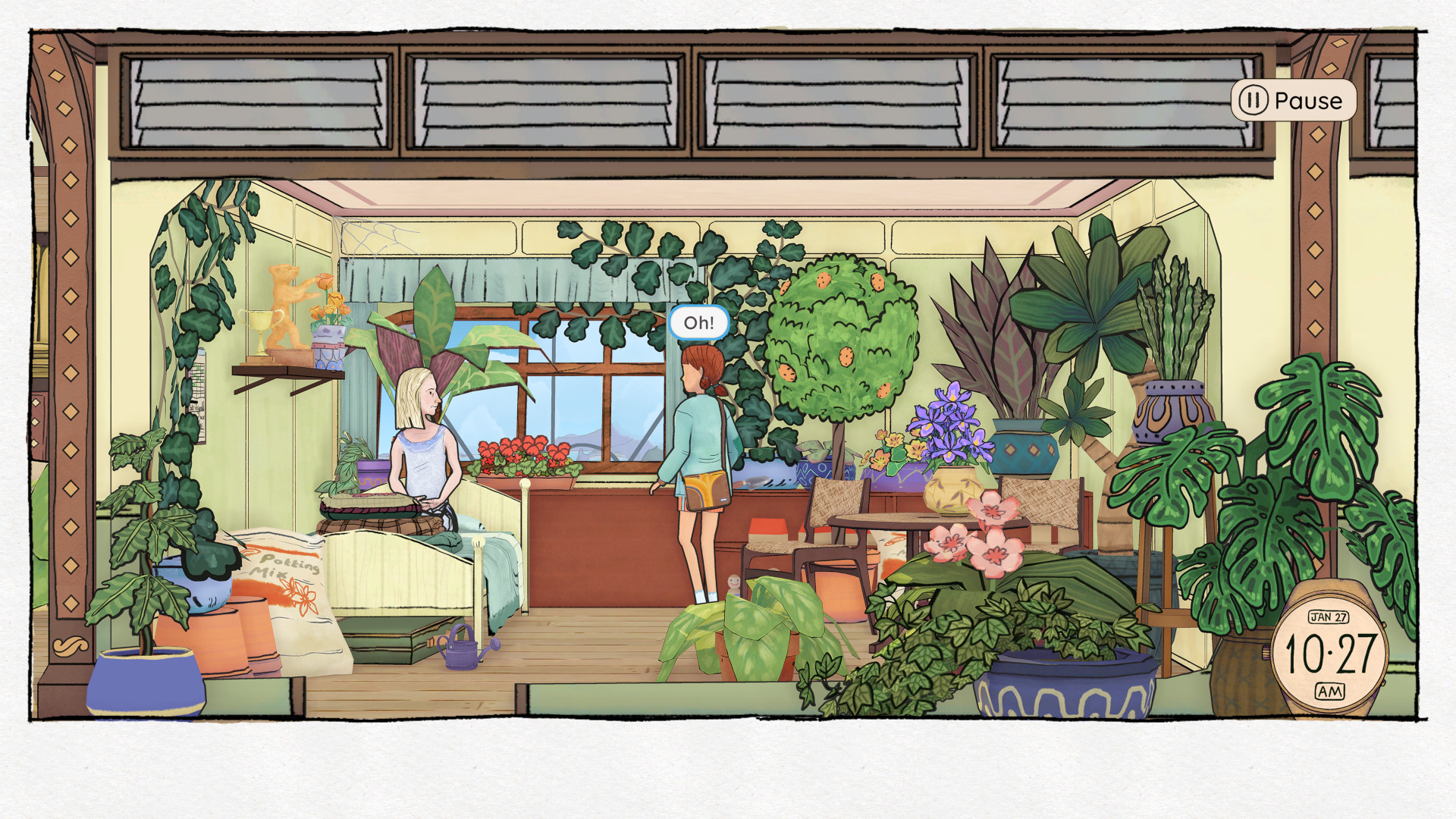
Casting Off
The conversations you have with these characters throughout Wayward Strand feel real and ‘lived in’. There’s experience behind the script here that, for me at least, made it feel like conversations I’ve had with family and friends. I’ve had the origins of my Surname explained to me several times, something you may find yourself experiencing as Casey. My Nan loved to mess with people, claiming she’d reached an age when she could stop pretending to ‘give a f**k’. Many moments spent with the character Ester reminded me of her. I’ve had a number of bosses that acted like Felix Pettigrew, walking around like a whirlwind of nervous energy while barking orders. This is all to say, there’s a lot to relate with in this script.
The talented voice cast of Wayward Strand bring these words to life. The characters are convincing because of the excellent performances throughout. I have to commend the casting for Wayward Strand too; the voices of each character match their appearance near perfectly.
Speaking of appearances, Wayward Strand is presented in a charming art style that’s reminiscent of children’s books from the 1930’s and 40’s. If Tintin was to board the Gräfin Isabella, I wouldn’t have been surprised. It’s really quite beautiful at times.
The Quiet & The Quirky
While Wayward Strand looks fantastic, there are a number of visual bugs that threaten the immersion it works to create. It’s little things, like characters clipping through one another and a wheelchair disappearing and reappearing, that happen quite regularly. While none of the little glitches encroach on the game play, they do counter the tone of some of scenes. It’s difficult to really give yourself over to the seriousness of a situation when a character walks though another like they’re a ghost.
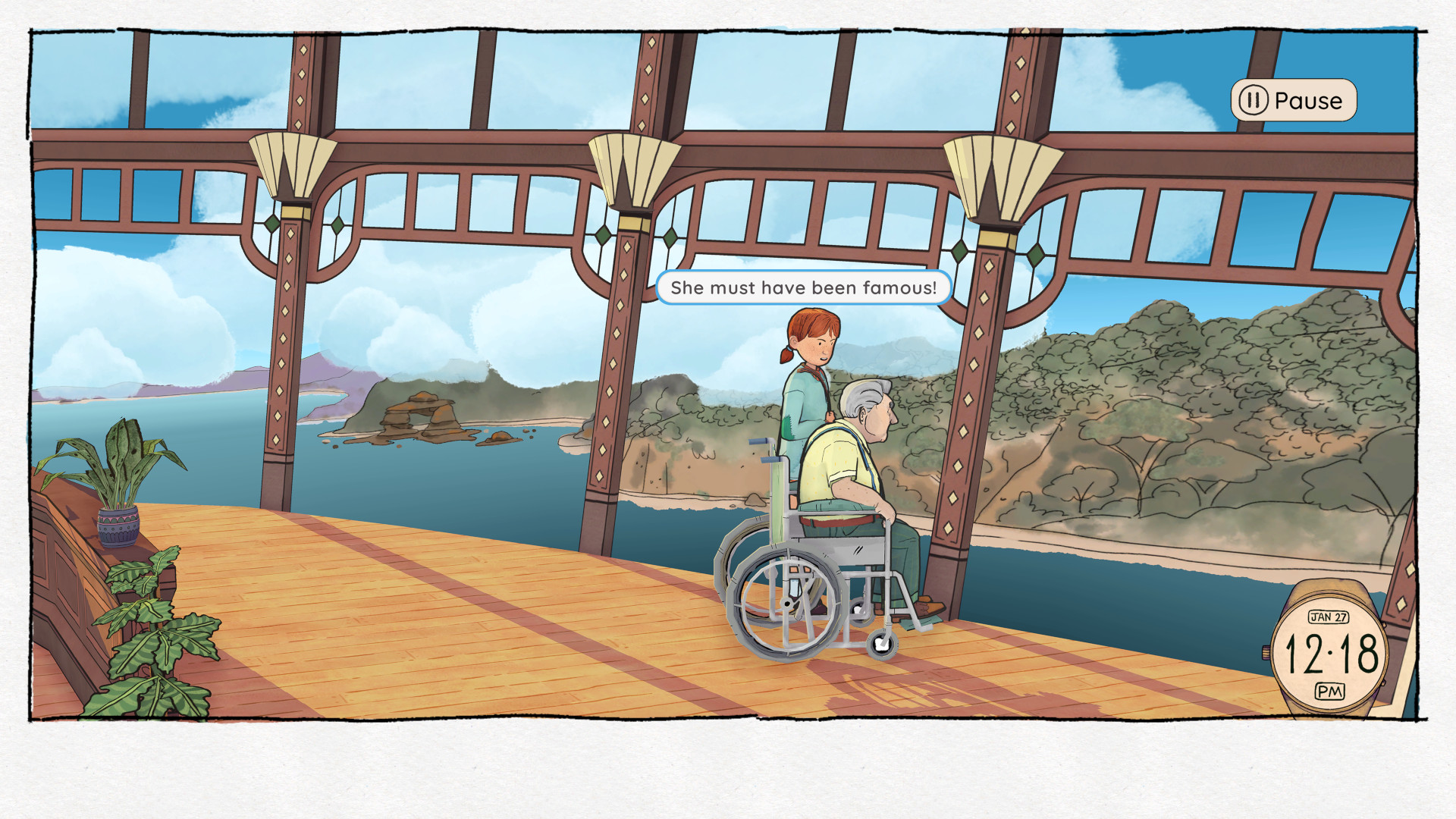
The animation is a bit stiff at times too. Of course, that works for some of the more elderly characters. When Ida and Tomi walk with their arms linked looking like an early Boston Dynamic robot prototype, I can buy that. With Casey and the nursing staff though, it just feels a little rough.
These niggles don’t really do much to detract from the full Wayward Strand experience however. The terms “wholesome” and “cozy” get tossed around to describe a whole gamut of title these days. Wayward Strand personifies both terms. It manages to find the poignant in the moments of silence just spent together. It full heartedly explores the dignity of age, of retaining your agency as you get old and how the stress of life influences relationships. A quite, contemplative game, it puts you in the passenger seat and lets you watch a handful of touching stories play out, nudging it along every so often without it ever feel like it’s your story. You’ll need a bit of patience to get the most out of it, but if you like a strong narrative in your games, you’ll likely have a great time with Wayward Strand.
Finding the quiet yet poignant moments among the personal human dramas unfolding aboard a flying hospital, Wayward Strand is a chilled out and beautiful game. The world itself progresses unabated even without your involvement which means each player will likely experience something different and unique to them. It has a few visual bugs but they do little to detract from this game’s strong narrative core.

Wayward Strand is available now on PS5 (review platform), PS4, PC, Xbox One, Xbox Series and Nintendo Switch.
Developer: Ghost Pattern
Publisher: Ghost Pattern
Disclaimer: In order to complete this review, we were provided with a promotional code from the publisher. For our full review policy, please go here.
If you enjoyed this article or any more of our content, please consider our Patreon.
Make sure to follow Finger Guns on our social channels. Twitter, Facebook, Twitch, Spotify or Apple Podcasts – to keep up to date on our news, reviews and features.


